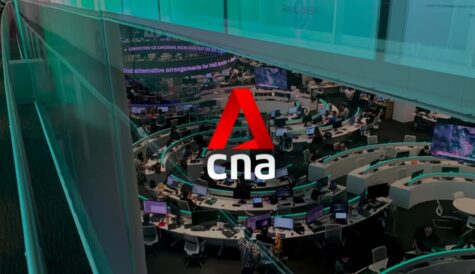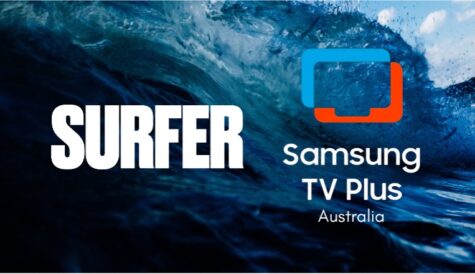
After more than 40 years of operation, DTVE is closing its doors and our website will no longer be updated daily. Thank you for all of your support.
Market realities – channel marketing strategies
Channel providers’ strategies vary according to their time to market and available resources. All however, state the importance of meeting the needs of local distribution partners while moving as far as possible to develop additional revenue streams.
The priorities of international channel providers are built on growing distribution and increasing viewership where they already have distribution. To make money they seek to develop, as far as possible, the classic ‘dual revenue stream’, complementing pay TV subscription fees from distribution affiliates by building an advertising sales story. And further down the line, they may seek to build additional revenue streams by offering value-added services such as transactional or subscription video-on-demand or, in the case of channels with their own intellectual property, by developing licensing and merchandising revenues.
Strategic priorities vary according to which stage channels have reached in their development. In the early days of a channel’s life, the crucial thing is to secure as much distribution as possible. For Bruce Tuchman, president of AMC/Sundance Channel Global, a relatively recent entrant in the international channel business, the key priority remains the expansion of the Sundance Channel globally.
“It’s about selling independent content movies and series coming out of the non-studio framework and appealing to a new, sophisticated audience that wants to watch compelling content not only on TV but also on the internet and mobile devices,” says Tuchman. The company’s priority is to deepen its availability in those markets in which it is already present and to source and acquire the right content for those markets, he adds. The programming mix will vary between territories and Tuchman says that AMC/Sundance Channel Global is continuing to pick up movies and series targeted at particular groups of territories. In addition to AMC original series, Sundance Channel is airing Weeds in Belgium and France. Next month the network is premiering Damages starring Glenn Close in Spain and Portugal, while season two of the Australian series Rake starring Richard Roxburgh will premiere this autumn in eastern Europe. Another Australian drama, The Straits, premiered in eastern Europe this month and will premiere in Flemish-speaking Belgium next month and Asia in January. Tuchman adds that Sundance Channel is also designed to cater to what he sees as a growing market in international territories for independently produced movies that transcend national boundaries, “bringing content to people that they’ve not been exposed to”, particularly in markets that lack a robust independent film production sector of their own.
Allied to unique content is robust marketing activity in partnership with distributors. “Trade marketing is quite important because we’ve come to the market later than some other channels,” says Tuchman. He highlights a series of recent street performance initiatives in France around The Walking Dead.
“We also sponsor film festivals all over the world,” says Tuchman, highlighting the channel’s involvement in the recent launch of the Sundance Festival in London. Inviting distributors to attend the festivals and inviting stars of the channel’s shows to meet affiliates – and Sundance founder Robert Redford has been present at key meetings – are alike part of the company’s relationship-building activity.
In addition to building relationships with affiliates, AMC/Sundance Channel has also engaged in consumer marketing initiatives. For Breaking Bad Sundance highlighted its first pay TV window showing of the series in Asia, generating “a lot of coverage”, according to Tuchman. Singapore’s The Straits Times ran a feature of the show featuring stars Vince Gilligan and Bryan Cranston. Glenn Close recently did several interviews with Spanish media for the launch of Damages. The Sundance Channel has also run sweepstakes where winning audience members are invited to the Sundance Festival in Utah.
Next month Sundance Channel will be celebrating the Busan International Film Festival for the first time with daily coverage produced at the event. There will also be a showcase of films seen at Busan, including the Asian premiere on Sundance Channel of the 2011 film I Carried You Home and the European premiere of the 2011 festival winner Bleak Night.
Much of AMC/Sundance Channel’s activity on the marketing front is designed to compensate the disadvantage the channel suffered by being later to market than many of its rivals. “We were late to the game and there are a lot of channels taking a good share of available revenue. In DTH, capacity is limited and the capacity to add channels costs money. That’s the challenge,” he says. However, says Tuchman, Sundance Channel benefits by filling a gap in the market, with content that can also showcase the merits of HD.
Another issue related to late entry to the channels market is that, while AMC content is well-known internationally, this in many cases is due to the fact that it has already been sold and seen on third-party channels. Tuchman says that the windowing strategy adopted by the channel varies according to the market and a variety of other factors.
Sometimes it is an advantage if a series has already been seen in a particular market, while at other times holding the first-run pay TV rights offers a clear advantage. Sometimes knowing which strategy to adopt is a case of trial and error.
“There are different lessons from different markets. Breaking Bad was a first run in Asia and we weren’t sure the market was ready. In others we air a mix of first-window and franchised series. If your first run is on a limited-reach pay TV service that can still generate buzz,” he says. It is rarely a disadvantage to already have sold content to third party channels however, he says. “Something like Mad Men came out before we had an international channel, and that was exploited through traditional routes, but we have had no problem re-securing rights,” says. “Nowadays we work closely with production partners and colleagues in the US to work out the right windows for us at the right values.”
New brands
Relatively recent broadcasters, or those launching new channel brands, must of course fight to find their own place in what are often crowded markets. French broadcaster Trace started life as an urban lifestyle magazine, before launching its first music channel, Trace Urban, in 2003. It has since expanded its portfolio, adding Latin American music channel Trace Tropical and African music channel Trace Africa to its line-up. More recently, the company made a bold move into sports, with the launch of Trace Sports, a channel dedicated to the lifestyles of sports stars. According to Trace’s CEO Olivier Laouchez, far from stretching Trace’s core values, Trace Sport is a perfect fit. “It conveys the same core values of our music channels by talking to the youth about their passions,” he says.
Rather than entering the crowded world of pure sports channels, which are usually controlled by well-established incumbent channel operators, Trace took a different approach by concentrating on the stars that ply their trade on those sports channels. It seems to have paid off; since launching in 2011, the channel has secured distribution agreements in over 70 countries and the broadcaster plans to reach over 30 million subscribers from all continents by the end of 2012.
For Laouchez, one of the key focuses for Trace is to make sure operators and consumers understand its brand values. “We ensure Trace’s channel values are understood by operator parents and consumers by using them a filter to drive our decisions, and especially our content strategy.”
Laouchez says there can be a lot of value in formulating marketing partnerships with operators in specific regions to help promote Trace’s channels and values. One such endeavour involved the launch of a temporary ‘pop-up’ channel in partnership with French DTH operator CanalSat to tie in with the Olympic games. La Chaine des Champions, Spécial Londres offered exclusive access to French athletes taking part in the Olympics. The channel was made available exclusively to CanalSat customers. “Our marketing efforst are fully focused on partnerships with operators,” says Laouchez. “We have used our unique access to sport and music celebrities to organise many promotions around the world.”
Free-to-air channels face somewhat different challenges. Another French channel that launched (relatively) recently is news broadcaster France 24. Despite launching less than six years ago it has already expanded its reach to 255 million households worldwide, with an audience reach of 45 million viewers per week. The broadcaster, which offers three language channels, in French, English and Arabic, recorded a 52% year-on-year audience growth last year, and according to Eric Cremer, vice-president of distribution at France 24, it is aiming to maintain this momentum. “I could mention specific countries where France 24’s penetration rate remains average, or specific objectives like developing pay TV revenues in some territories but as a global news platform broadcasting in three languages, France 24 must perform everywhere in the world on every network and on every device.”
The decision to extend the France 24 service to two additional languages alongside its native French channel means the channel can remain relevant to a wide number of people globally. While the three language feeds are actually three distinct news channels made by native-speaking journalists, Cremer points out they share many common elements including reports and editorial policy, which to keeps them within the France 24 brand. The channels focus on international news rather than domestic stories, with journalists coming from over 40 countries. “This contributes to the creation of a very open state of mind within the channel’s team,” Cremer adds.
The number of international news providers is growing, and Cremer says it can be difficult to stand out. “It’s not easy to convince people how France 24 is unique and different from other news channels with words. We can only encourage operators and consumers to watch it, test it and compare it. It also means that a big part of our distribution department’s role is to meet operators and continue to contact them in order to explain what France 24 can bring to their clients.”
Once it has a distribution deal in place, Cremer says France 24 works closely with operators to leverage brand awareness, using tools including co-brand, social networks and creating special events: “It’s a win-win deal. These partnerships allow both operator and content providers to gain more visibility across a wide range of audiences.” Marketing deals often form part of contracts with operators, he adds.
Cost of localising
One of the key issues that faces channel providers as they expand their global distribution is when and how to localise their feeds so as to better serve the needs of a particular market. Localisation can mean many things – from creating a language version of the channel for a particular market or set of markets to a fully locally programmed version of an international brand. But all steps along the way involve costs that must be measured against the commercial opportunity.
Given the cost of localising channel feeds, global kids channel KidsCo will weigh international expansion opportunities on a case-by-case basis, according to managing director Hendrik McDermott. KidsCo will also look at opportunities to diversify its revenue streams.
“Globally we’re looking at increasing subscribers in a calculated fashion, targeting key territories where we’re already on the air. We have pan-regional feeds and it costs a lot to localise feeds. We have to take a dubbing risk to go into new territories,” says McDermott, who took charge at KidsCo at the end of 2011.
McDermott said that KidsCo still had “a long way to go in Russia” and had done well in Turkey, another significantly large market. Recovering its position in key central European market is a priority as is building its presence in Romania. “Turkey gives us almost perfect distribution. We are trying to emulate that success in central and eastern Europe,” says McDermott. Western Europe remains challenging, given its domination by large pay TV operators.
The high cost of localisation – essential for kids channels – means that the case for launching in a new territory has to be weighed carefully. While it is possible to introduce kids programmes in certain Asian markets in English, Europe requires 100% localisation, he says. “It’s difficult and expensive,” says McDermott, adding that for kids channels localisation generally means expensive dubbing. “We don’t subtitle at the moment – affiliates prefer dubbing. From a viewer perspective dubbing is better.” In a few territories such as Poland, lectoring is the preferred option.
The cost of localisation means that small countries can be challenging from a business perspective. However, in some cases an English-language version of the channel is acceptable and some countries will accept the language feed of a neighbouring territory if its inhabitants are familiar with that language. “In general the affiliates expect the channel to be 100% dubbed on day one. Often the upfront revenue up front doesn’t make smaller territories valid. We are in 18 different languages. Small countries might have expatriate audiences or multi-language feeds and some will tolerate English,” he says.
Taking localisation further, KidsCo does acquire some region-specific programming, says McDermott. However this generally has to work across multiple territories. “We do acquire region specific programming, but it’s not worth having local insertion for one particular programme,” he says.
In general, says McDermott, KidsCo will continue to focus on its core message of delivering safe content for kids. The channel recently consolidated its branding and logos and has communicated its brand guidelines to affiliates: “The thing we can offer is safe and non-violent content. We are trying to provide high-quality programming for children.”
Brand values
For established pay TV channel providers, one of the key challenges is expanding channel portfolios and distribution without diluting core brand values.
One way to do this is to invest in local production. At the recent CTAM Europe EuroSummit in Vienna, Levente Malnay, CEO of Chellomedia Central Europe, told attendees that Chellomedia had made significant content investments to make its central European brands as premium as possible. He said that the company had invested in local formats – notably for its cooking channel – and had simplified and conflated its lifestyle and factual brands into a single Spektrum Home channel. Investing in local production had to be done in a responsible way and Chellomedia had not, for example, invested in local programmes for its kids channels, choosing instead to create characters that could be used in interstitials give the channels a distinct brand identity, he said.
Malnay also said that Chellomedia Central Europe planned to develop HD versions of its channels to exploit what it views as an opportunity to take advantage of relatively high penetration of HD TV sets combined with under-consumption of HD content. He said that HD set penetration in the region varied between 20-40% but actual consumption of HD services was currently minimal.
This kind of focus on the needs of a particular market generally requires the resources of a large multichannel organisation.
According to Jesús Perezagua, Fox International Channels president, Europe and Africa, the broadcaster’s programming and channel distribution strategy is defined by the strength of iconic brands Fox and National Geographic. Despite having two brand ‘pillars’, in total FIC operates 38 channel brands spanning entertainment, factual, lifestyle, and sports genres. “Over the last decade we have developed different TV brands that have evolved from Fox and National Geographic,” explains Perezagua. “The ones dedicated to fiction have kept the Fox affiliation, such as Fox Crime, Fox Movies, FX or FoxLife, and the same goes for the National Geographic channels developed from NGC, including Nat Geo Wild, Nat Geo Adventure or Nat Geo Music. Fox and NGC are our flagship brands for fiction and factual, so all new products are immediately recognised by the viewers as part of our legacy for high-quality programming.”
FIC’c channel brands, particularly Fox and Nat Geo, are known globally and, according to Perezagua, the company treads a fine line between ensuring that branding emphasises the international perception of the brands whilst also ensuring the channels are relevant to local viewers. “Our content and premium global brands are localised in each market to ensure the satisfaction of everyone in every location. As such, FIC’s goal is to provide top-quality programming and build emotional connections with audiences around the world. We like to tailor the look and feel of our channels to the different local tastes, but without losing our international brand style,” he says. The broadcaster has a common graphic image that makes its channels immediately recognizable. Recently the Fox graphic identity has been overhauled across all channels to give it a more contemporary style that is linked to its commercial targets.
Depsite the large presence of Fox’s channels around the world, Perezagua stresses the importance of the relationship it forges with service providers “Our distribution partners are key for us. They are our clients and the way we reach our viewers. We collaborate on marketing initiatives and always aim to offer innovative proposals that engage their subscribers. This is a key part of our business. Thanks to a strategy that combines the best content with the most innovate and smart promotion, we support their goals of adding new subscribers and satisfying existing ones. We see this as key added value with FIC brands.”
Diversification
Developing a suite of channels allows providers to broaden their demographic base and facilitates the diversification of the revenue model. Discovery Networks International has moved in recent years to balance its portfolio, appealing to female viewers as well as males and distributing channels that can attract advertisers as well as subscription revenues. In Discovery’s case, the international launch of the female-skewed TLC has been a major area of focus over the past couple of years. Mark Hollinger, president and CEO of Discovery Networks International, says that Discovery is now concentrating to some extent on building the viewership of TLC for which it already has distribution in a significant number of markets. “There is still a bit of growth to be had but we are also focused on solidifying the viewership for the channel. It’s seen some audience growth. It is the primary female flagship,” he says.
Discovery has launched a number of new channels over the last year, including Discovery Kids in Asia. “It’s picked up a lot of buzz in a market that’s tuned in to education as a priority,” says Hollinger. Crime and investigation channel ID, which has been successful for Discovery in the US, has also been rolled out in a more significant way internationally over the last year. “We’ve really prioritised it, with a full launch in Latin America in August, and we are starting in central and eastern Europe with Poland,” says Hollinger. “We’ve done a big distribution push and we are rolling out a lot of content from the US.”
Discovery has also started to build a new content production source for the business after hiring former Channel 4 and BBC executive Julian Bellamy as production and development chief last year, tasked with pushing the development of content for multiple regions around the world. Hollinger says that Discovery is also continuing to look for ways to grow its production business through acquisitions or partnerships.
While growth in distribution is beginning to flatten out after years of development, Hollinger believes “there is some still to get”. He says Discovery has set a goal is to have TLC or Real Time (its alternative in some markets) distributed on a global basis. But on top of extending distribution, Discovery primarily wants to extend viewership through getting the programming mix right. While TLC has done well in Nordic countries and central and eastern Europe, and Discovery Real Time is highly rated in Italy, Hollinger says that the broadcaster is keen not to lose momentum on the content side.
“For central and eastern Europe a lot of US content works very well,” he says. “We’ve also produced a number of shows based on formats we have done or licensed.” Recent commissions include a version of The Great British Bake-off in Polish.
Discovery is also pushing forward with extending the reach of ID, which also has a female-skewing audience. “The goal for ID is to replicate some of the success the channel has seen in the US. Over the last two years it’s been the fastest growing channel in US pay TV,” says Hollinger. “It’s also got the highest average time spent viewing across the female audience in the US. If we could replicate that in international markets it could be a flagship channel.”
Turning to the other major pillar of Discovery’s strategy to woo female viewers, The Oprah Winfrey Network, Hollinger says: “We talk to management about international opportunities about possible international expansion but the great thing is it’s gaining traction in the US, and our goal was to get it on a solid footing in the US.”
When it comes to marketing its channels, Discovery has focused on doing things in partnership with its distribution partners. “We feel we get a lot of bang for our buck by marketing with our affiliates,” says Hollinger. Social media plays an increasingly important role in extending marketing beyond traditional media, and Hollinger sees use of social media as part of Discovery’s localisation strategy. “We know Discovery is a global brand and there is a global audience. You use that to build brand loyalty. But when you are building loyalty around a specific programme its usually about a local initiative,” he says.
Localisation more generally for Discovery, as for other channel providers, encompasses scheduling and interstitial material as well as local acquisitions. “There are lots of things that make the channel look local before you get to programming. Content in the factual space travels well across borders and we share a lot of content across territories. That is always going to be the biggest component of the programming strategy,” he says. “For the local element the question is the market big enough to justify local investment, and then what kind of content for what channels?” For the Discovery show How we Invented the World, which is about technology in the modern era, Discovery took a fresh approach by creating 12 or 13 different ‘modular’ versions of the show. Local presenters or interviews can be inserted within a broadly international programming stream as required. “There will be a lot that’s shared but parts that are really local, with a common skeleton. We think it will work well from a ratings point of view. It’s a step beyond a format. It could become a standard production model for us,” he says.
If there is a common thread running through the thinking of diverse channel providers in the international marketplace, it is the idea of tailoring the channel’s activities – ranging from marketing initiatives up to and including the acquisition and commissioning of programmes – to meet local requirements in a way that makes commercial sense.



